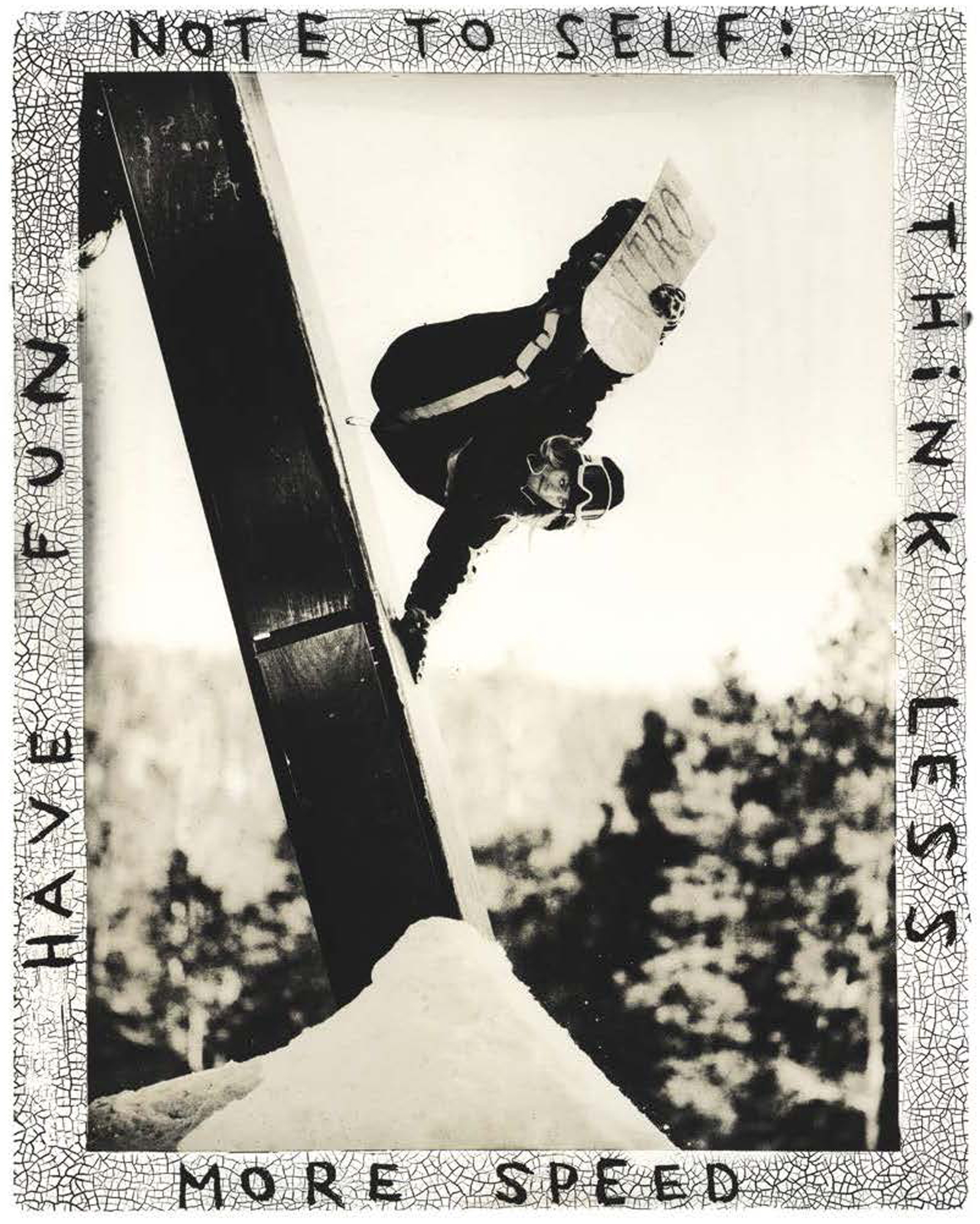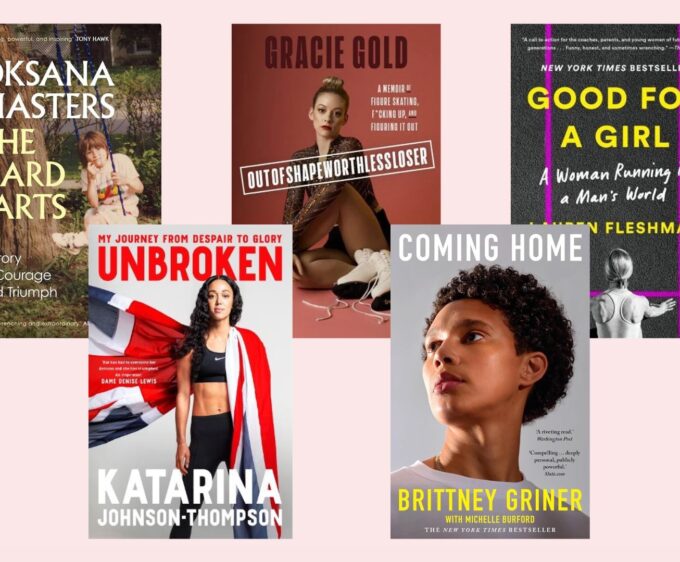
Snow Heroes
French photographer Jérôme Tanon’s stylish, analogue portraits on the slopes shift women to the centre of snowboarding’s story
By Sam Haddad
The warm, vibrant and stylish portraits by French photographer Jérôme Tanon beautifully capture the true essence of the women’s snowboard scene. His book, ‘Heroes’ features Olympic Gold medallists Jamie Anderson and Anna Gasser, icons Marie-France Roy, Annie Boulanger and Desiree Melancon, and Team GB’s Mia Brookes. His images are a triumph of artistic photography and snowboard camaraderie that showcase all that is great about women’s snowboarding – something the photographer feels has been left on the margins of the sport for too long.

In 2012 Jérôme decided to attach a cheap camcorder to the side of his main SLR camera. Over the next four years, while travelling the world taking pictures of pro snowboarders, he filmed behind-the-scenes footage on a constant loop. After a mammoth edit, he turned the 100 hours of footage into a documentary called ‘The Eternal Beauty of Snowboarding’. The film, which has had over 1.5 million views on YouTube, was widely regarded as seminal for the way it captured the spirit, humour and absurdity of professional snowboarding. When I first watched it, I loved it too. But I also wondered where the women were. Aside from the odd sighting of a pretty girl they’re discussing on Instagram, they don’t feature at all.
Jérôme was also troubled by the stark gender imbalance. “It was not supposed to be a boys’ movie,” he says over Zoom. But most of the filming took place on shoots for snowboard movies, where there was “not a single girl around”. “My film was supposed to represent snowboarding but there were no girls involved, I thought it was really bad,” he says. When he thought about it further, he realised that although he’d been a snowboard photographer since 2007, he didn’t have many photos of women snowboarders. It was something he was determined to change, and the germ of the idea for the art project Heroes was born.

Jérôme had a few big-name snowboarders he wanted to start shooting, including Desiree Melancon from the US and Canadian Marie France Roy. They were unusual in that they had featured in regular snowboard movies, whereas most women at the time would only get parts in all-women films. So he went with the flow, meeting different crews around the world, from Salt Lake City and Whistler in North America, to Laax in Switzerland; he shot over 40 riders in a two-year period. It went from a passion project, which he fitted in on the side, to his main gig for which he cancelled other work. He originally thought he might do a few art shows with the photos but was so taken in with the culture of the women’s scene that he decided to produce a book. “I wanted to do a really good quality book to showcase these riders and make a statement,” he says.

He hit up the main snowboard brands to see if any of them could help fund the project but all except one, Salomon, told him they’d love to support women’s snowboarding but didn’t have the budget. I worked at a women’s snowboard, surf and skate magazine from 2007-2015 and would always hear that response from brands, who always managed to find the budget to advertise in the male-dominated titles. So Jérôme turned to Kickstarter and reached his target in just two days. It was an early lesson in how much interest there was in women’s snowboarding and also highlighted the challenges they constantly faced in the industry. Themes that would echo throughout the project.
When Jérôme shoots photos, it’s a long and immersive process. He’ll often stay close to the crew for weeks on end to get to know them as best as he can. The more he chatted to the women the more he realised how much of a struggle it was for them to make a living from snowboarding, especially compared to the men’s crews he usually worked with. It was a constant hustle for the women to get the budget they needed for marketing, photoshoots and filming movies. “I didn’t take any notes but just started talking to them about their experiences,” he says. “Their passion, their path to snowboarding… the stories were super interesting, and I felt we needed to tell them, as we’re missing something huge in snowboarding [by making it so hard for women]. I asked if they would mind writing down what they’d told me to include in the book.”
It was also important for Jérôme as a man to give that authorship of experience to the women. “I’m a guy so of course I can’t talk for women, but I could help give them a voice with this book,” he says. “[The riders] also got involved in the photos and when I was etching words into the negatives [in the dark room], I was talking to them about what we should write. How did they feel when this photo was taken?”
The etchings on the negatives, from “Aight let’s get it bitch” and “Fuck that hurts” to simply “Future”, give the book a punkish ’90s fanzine feel, though each picture also feels like a work of art. Jérôme shot the whole project in black and white and on film, which makes it stand out even more in a world saturated with screens and shimmering digital content. “Analogue is how the best quality photos are done, especially when you are not just about sports photography, but sports and art photography,” he says. “It’s a lot more work of course but it’s more powerful and gives more value to those photos. If they’d been shot digital and in colour, I feel that in a few years you would look back on them and think they had an old feel. However, as black and white darkroom prints, in ten or 20 years you will think: ‘Oh this is rad snowboarding.’”

HEROES

As film is fragile and expensive, I asked Jérôme how hard it was to shoot on film in the snow. “The most challenging part is that the camera only takes one photo at a time so you have to wind the mechanism, and you can only take ten photos per roll. It’s something you have to prepare the riders for, to take a few tries until we get [the staging] right. Obviously, you can’t see the photo right away, so you need to make sure you didn’t arrive at the other side of the world to take a missed photo. In one week you might come back with five good photos, because the rhythm of how I shoot photos is super slow. But I’d rather come home with five great photos than come home with 100 ok-ish ones. The goal was to have really iconic photos, such as a huge beautiful backside air or a powder turn. I had key shots I was looking for.”

The book is genuinely awe-inspiring and couldn’t feel more different from the version of women’s snowboarding that’s usually shown in the mainstream media, namely the Winter Olympics with its event logos, hyper-real photography and air of officialdom. “Contests are a small part of snowboard culture in a way,” says Jérôme. “They get a lot of media coverage but what most snowboarders do is go riding with friends, that’s the essence of snowboarding.” And this is what he hoped to capture with this book.

His favourite shoot locations included Helsinki “a place with loads of hand rails and snow all winter, it’s like a giant snowpark” and Nelson, British Columbia. “We stayed at Baldface Lodge in the middle of the mountains, which you can only reach by sled,” he says. “It has all these powder fields and tree runs everywhere. Robin Van Gyn used to be a snowboard guide there, so she took me up there and we shot some really cool powder [shots].”
The response to ‘Heroes’ has been huge, and not just within the snowboard industry. Jérôme sold out his original print run of 2,000 and then joined up with ACC Art Books who reprinted the book and helped push it into art bookshops around the world. In the UK, it’s even stocked by Waterstones, where I can safely say I’ve never seen a book about women’s snowboarding before.

What does Jérôme think that shows about the potential appeal of women’s snowboarding? “There’s still room for improvement but ‘Heroes’ was part of a general shift. When you look at any [professional] snowboard team right now, they have one girl for ten guys. If you don’t give them the budget, then of course they aren’t going to be able to train as hard and be as good as the guys. And if you don’t have icons and girls in the magazines then the next generation are not going to think they want to be a pro snowboarder. But it’s growing slowly and is getting stronger by the year.”
He also wants to encourage more women photographers into the sport. “There are usually not enough photographers around, especially this last decade as everyone wants to be a filmmaker. We need photographers and especially women photographers. There’s not as much money [in it] but if you’re motivated and passionate about snowboarding, then that’s your ticket to the job. Being female could even be a plus in an industry where we are looking to get more girls hired.”

How did the male snowboarders, especially the ones he had to pause shooting with to work on this project, react to the finished book? “They were hyped and the sales have shown that men are just as interested as women in the project. You also have quite a lot of fathers getting it for their daughters. It’s a really good feeling,” he says.
And the brands that passed on the opportunity to get involved? Jérôme smiles and says they’ve bought a lot of copies.





